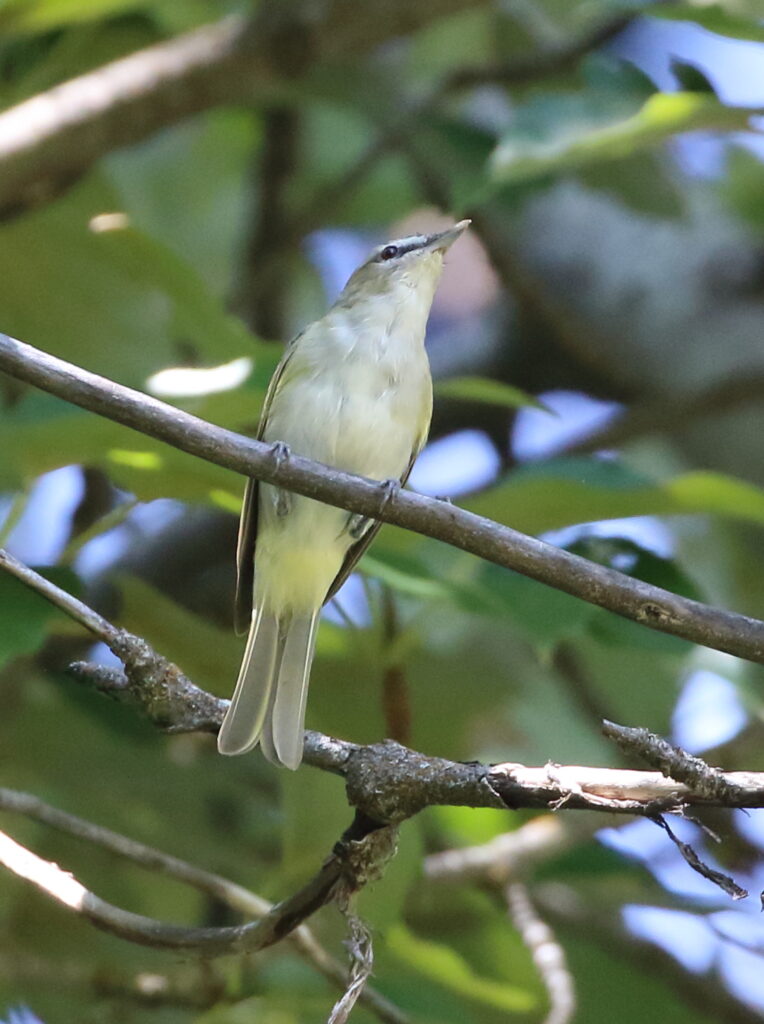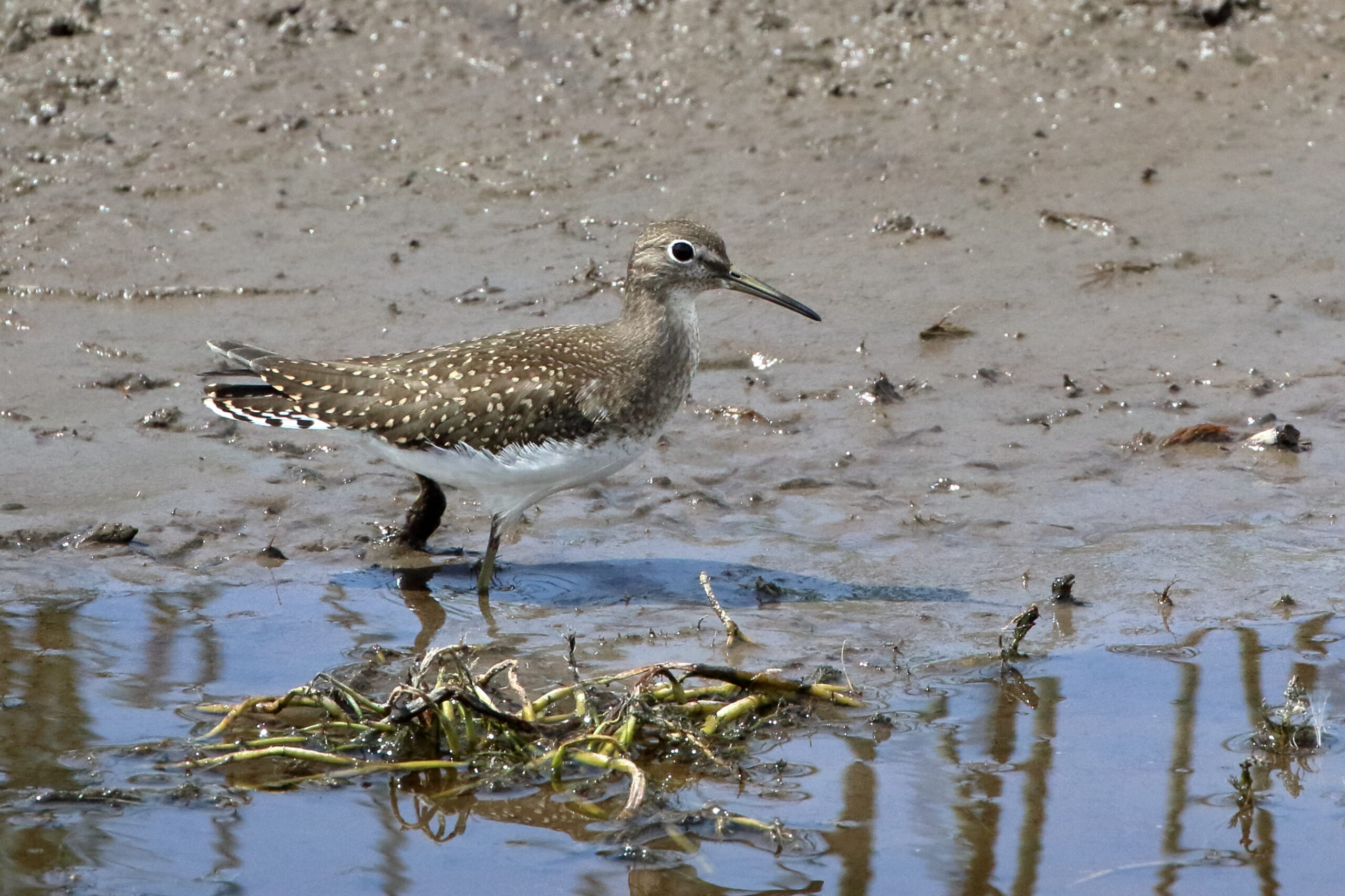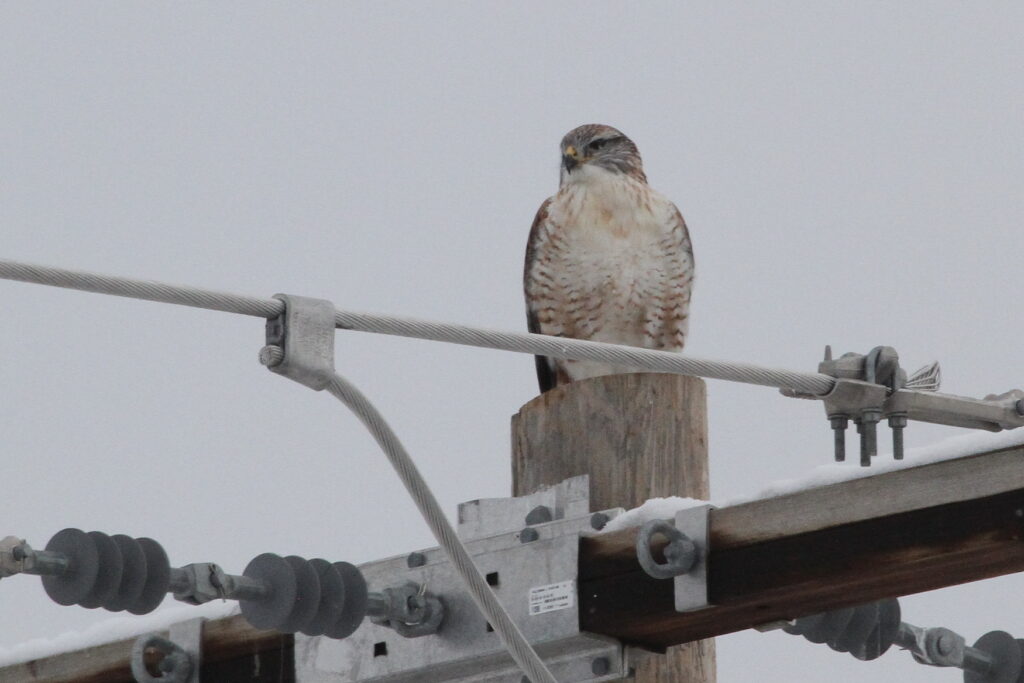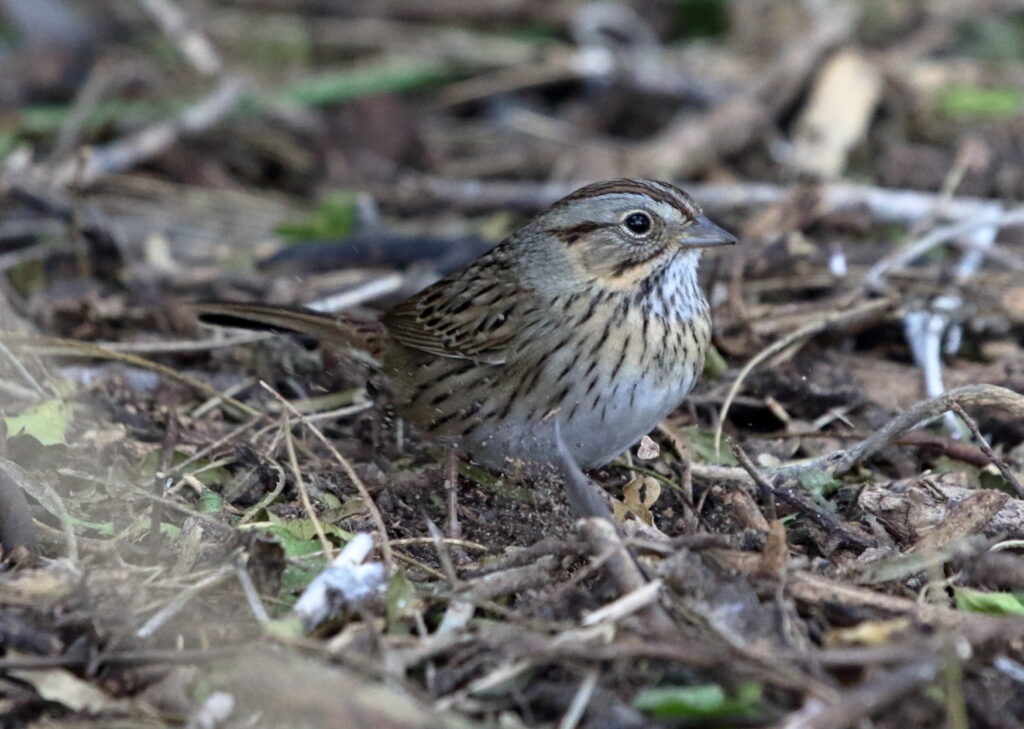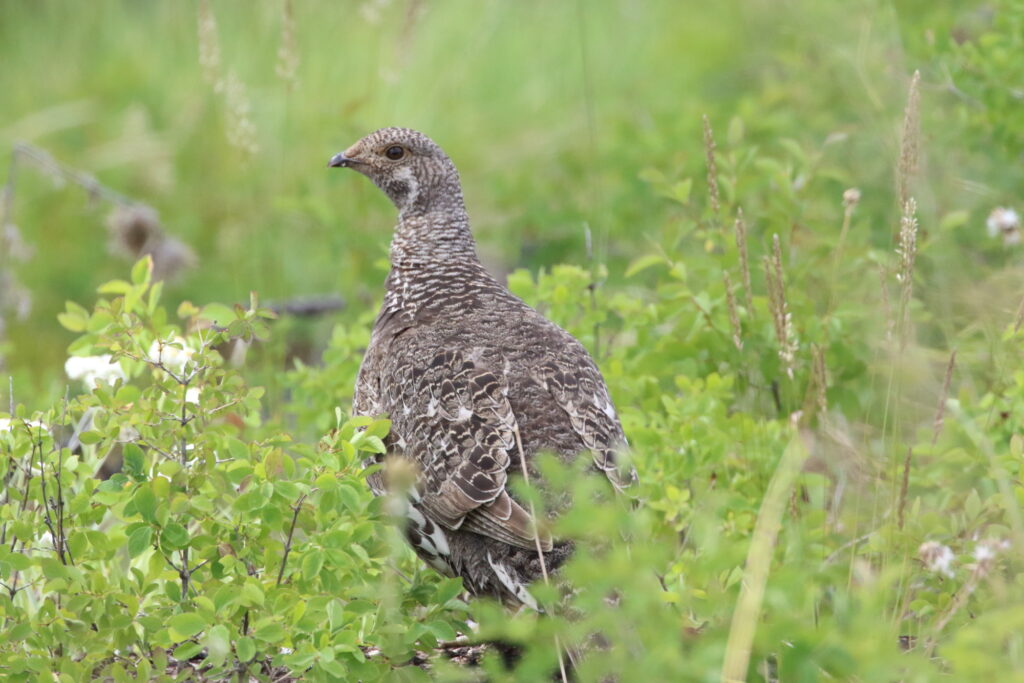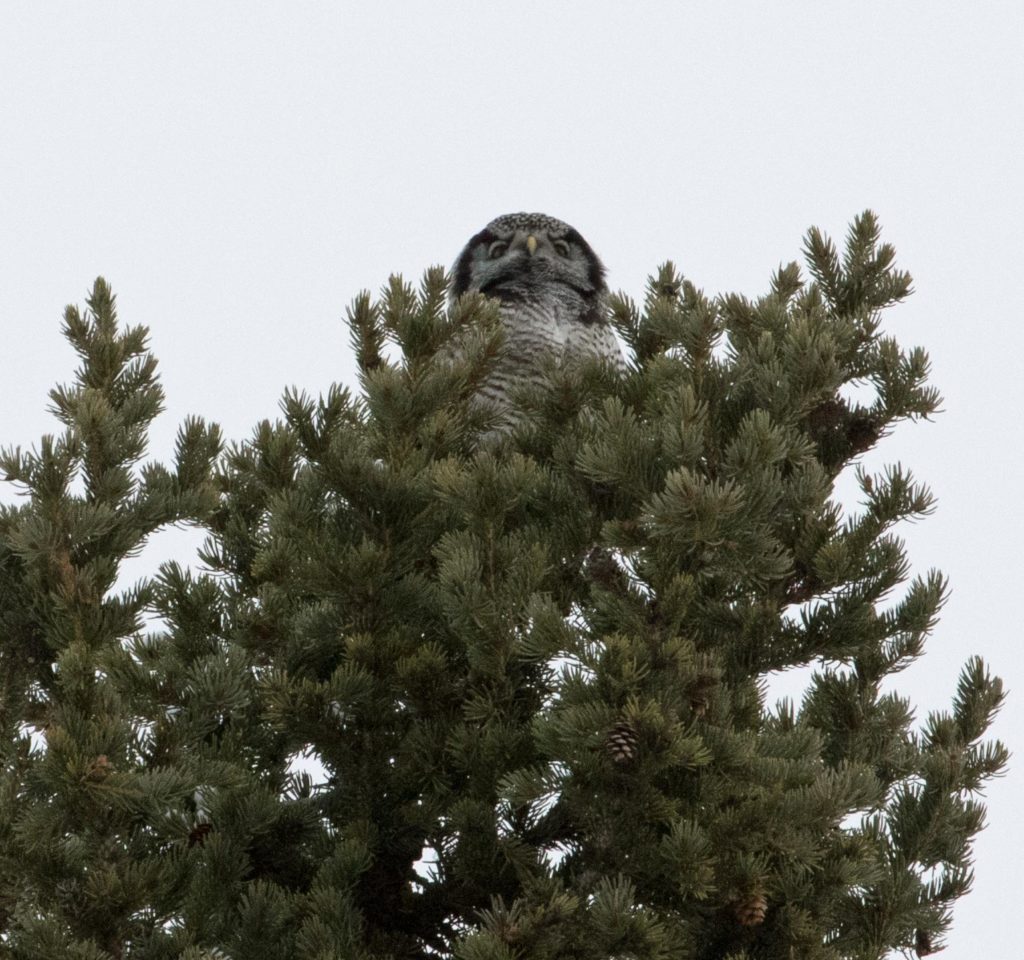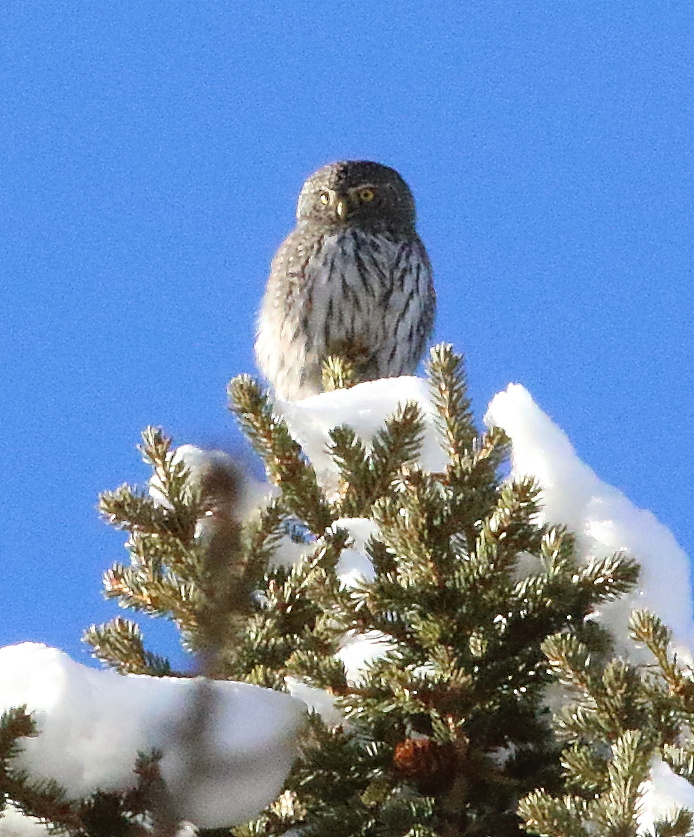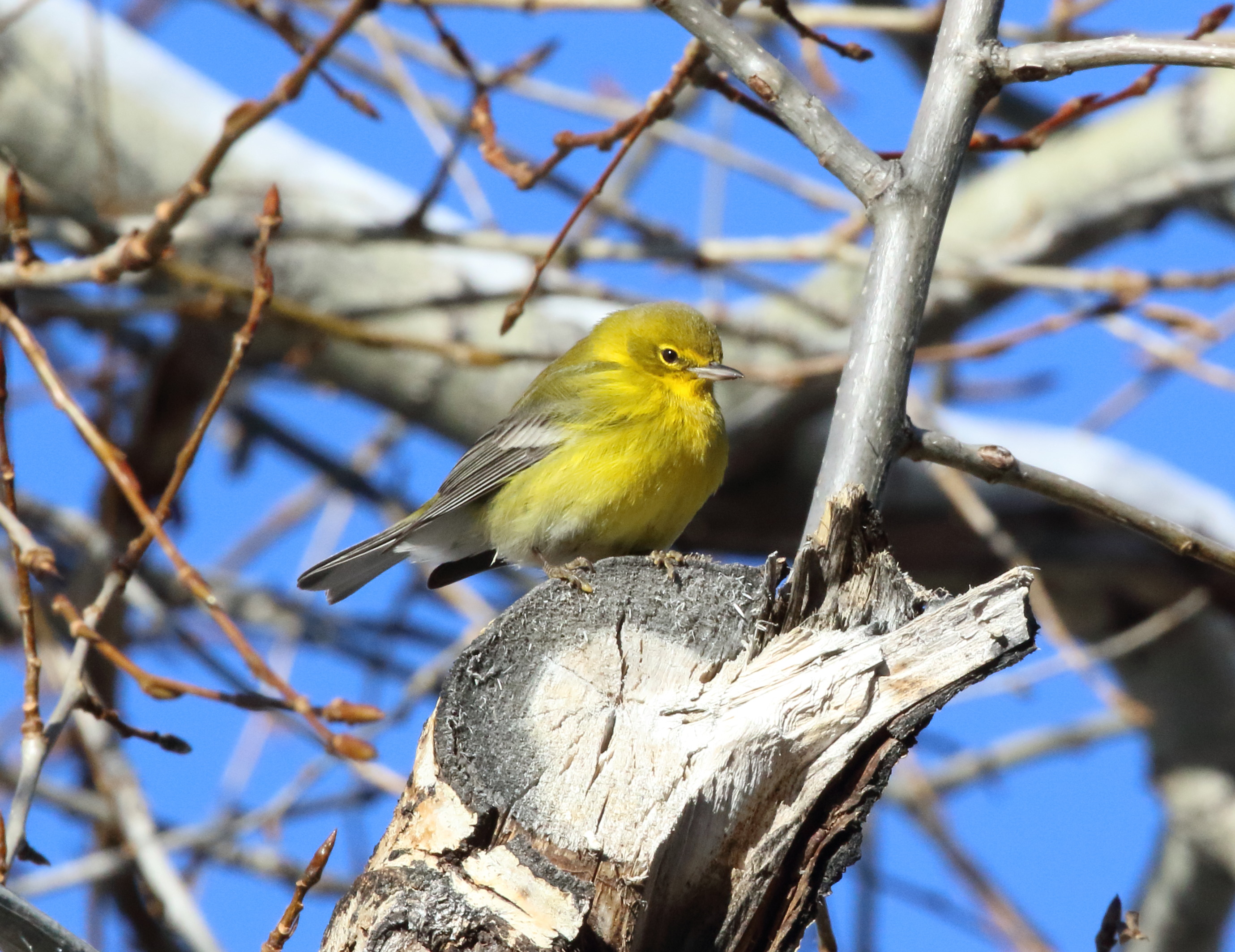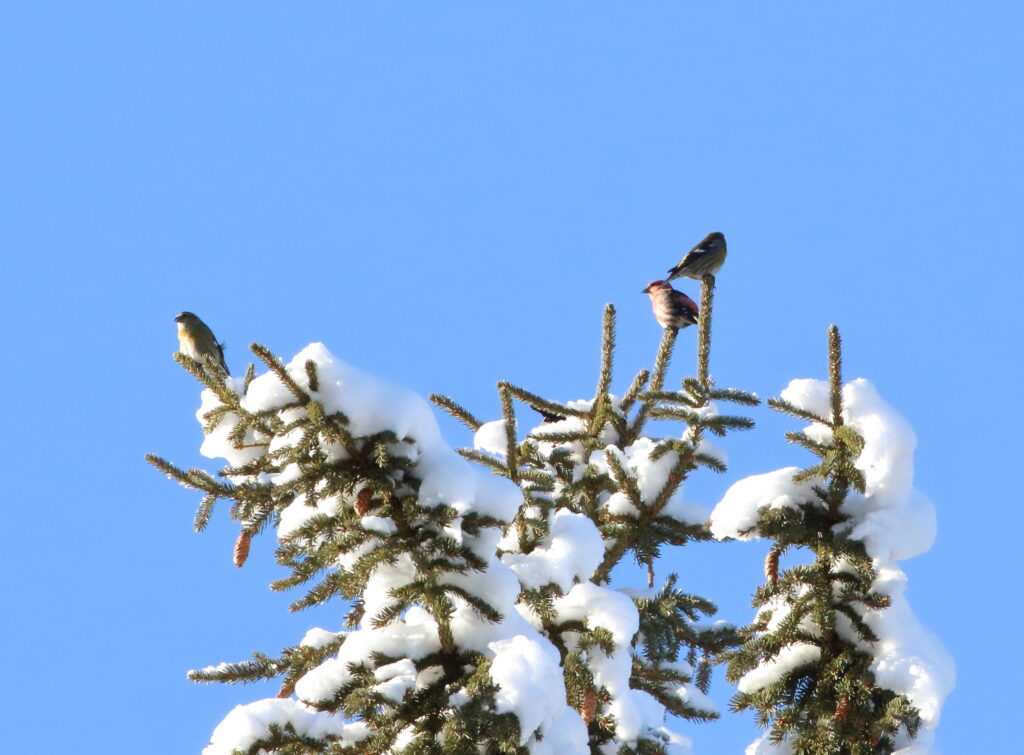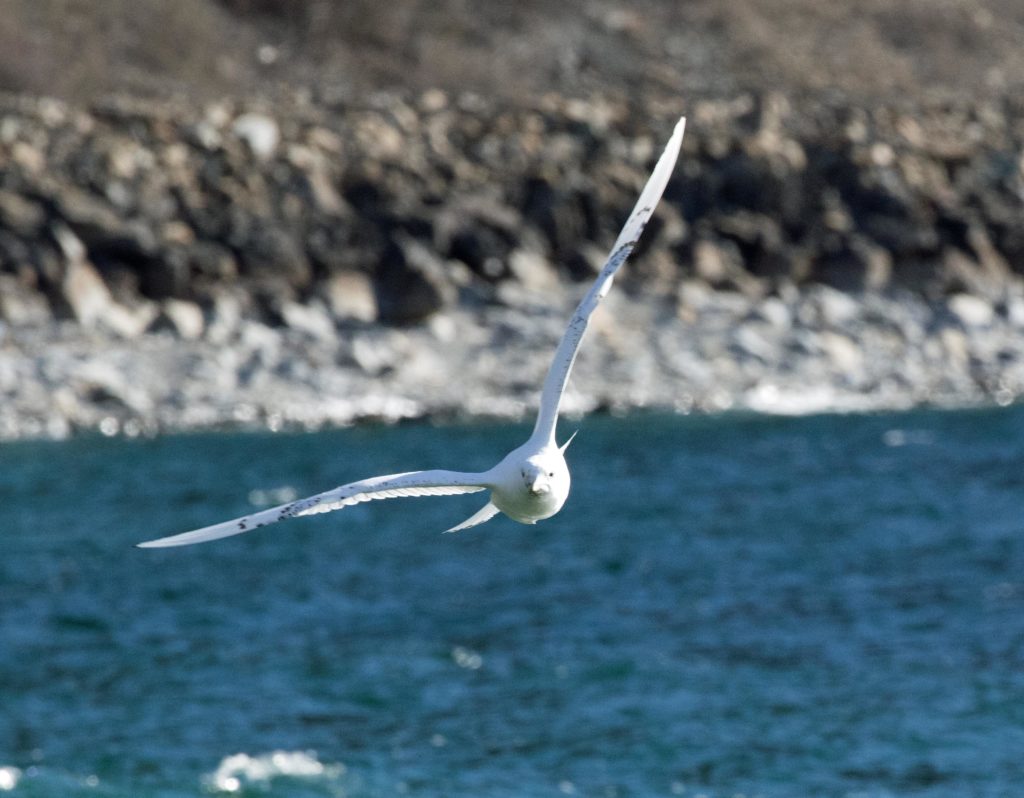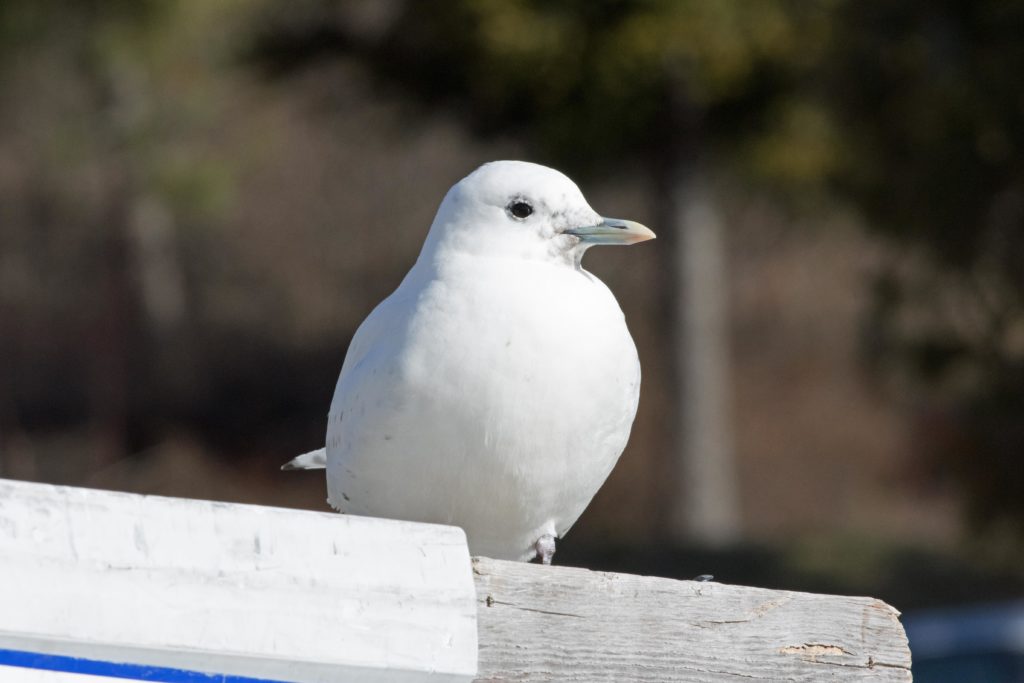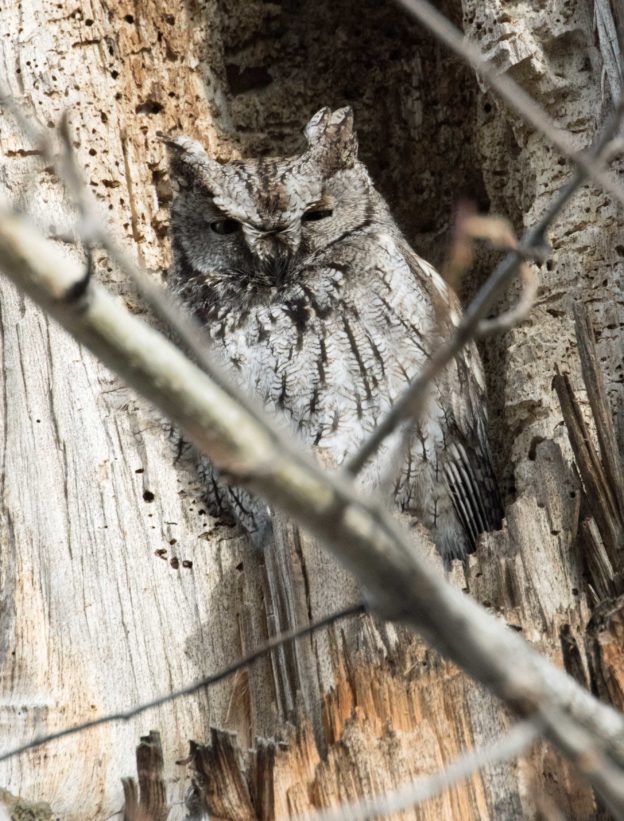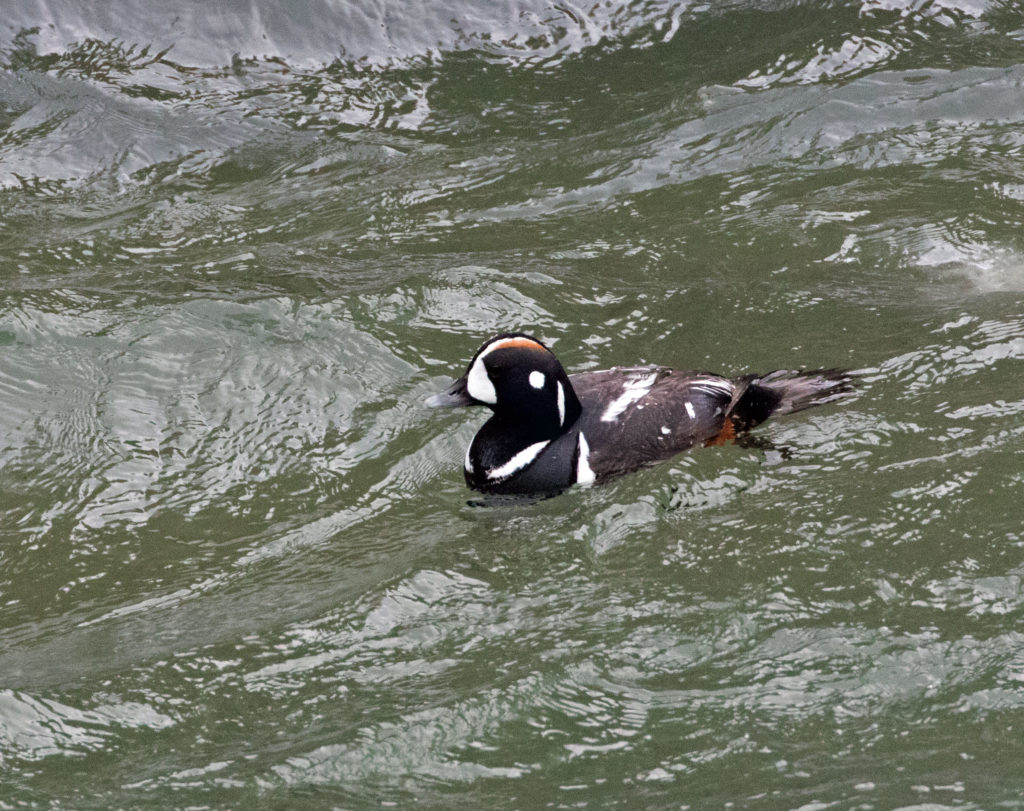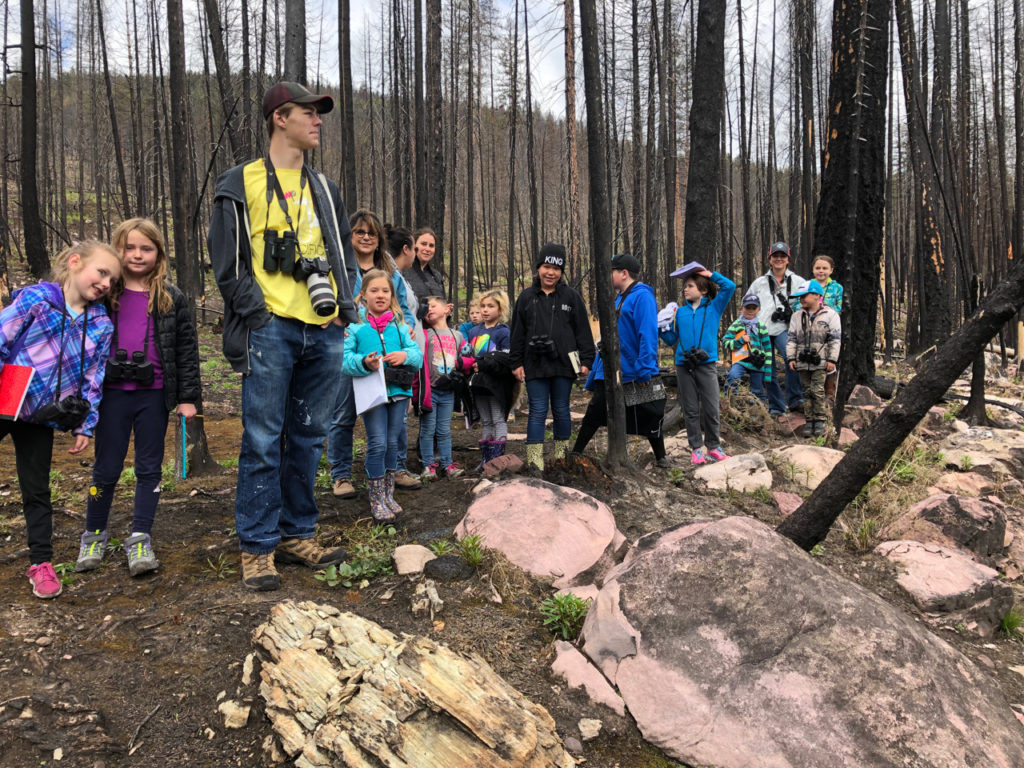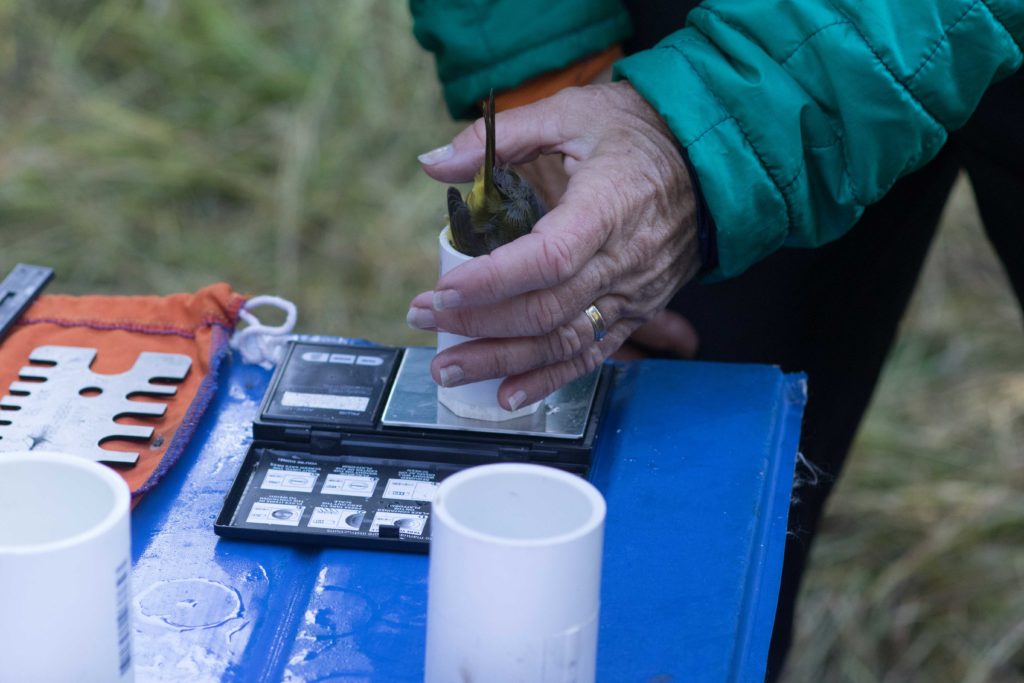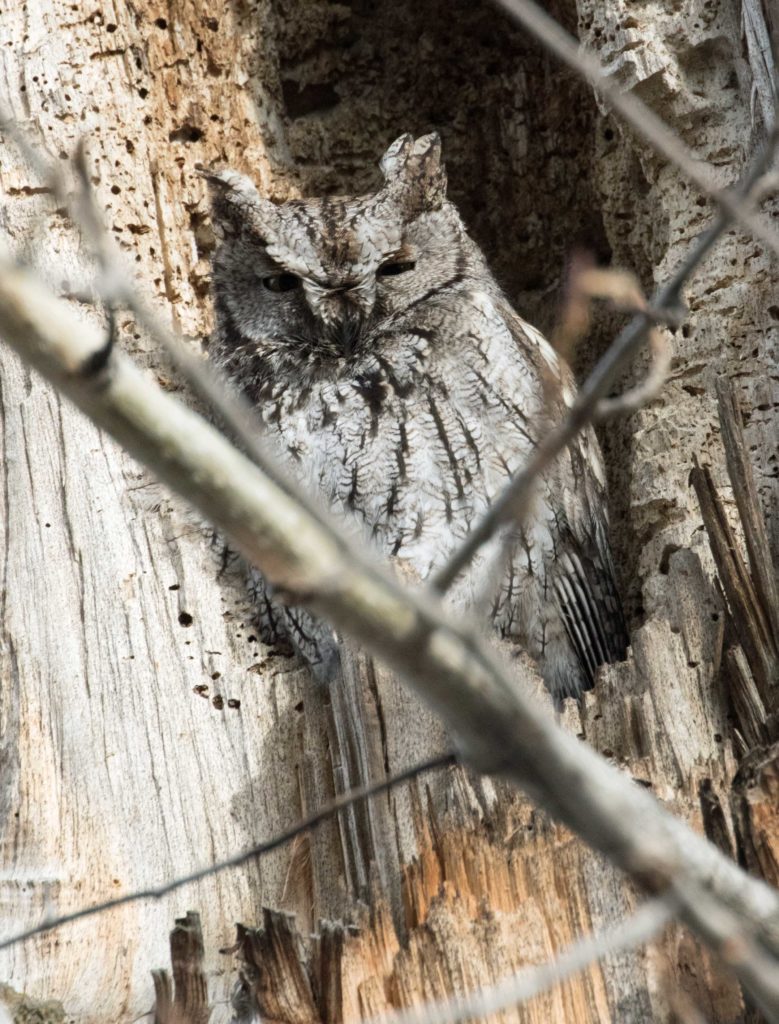As you, our loyal readers, know, I (Sneed) have set a 100-species challenge for myself while undertaking my new temporary job driving truck for the Missoula Fire Cache (which vehemently regrets all association with me and will deny knowing me in any way if asked). As you’ll recall, 100 species may not sound like a lot, but in August—arguably one of the year’s worst birding months—and given the limitations of where I can go, it’s actually quite a lofty ambition pour moi. After all, my birding must be limited to what I can see while driving or during quick rest breaks just off my routes. As of two weeks ago (see Birding by 5-Ton Truck: a 100-Bird Quest), I had reached 59 species, but had picked off most of my easy targets and was desperately in need of large numbers of “watery” birds if I even dreamed of getting close to 100. It didn’t seem likely, but Lo! I have recently happened into some luck!
One happy circumstance is that I have been sent to several locations that take me by Warm Springs, one of Montana’s most famous birding locales. I can’t explore much of it during a quick break, but one nice pond sits just off the interstate offramp and I’ve been checking it out. The pond has yielded consistent Wilson’s Phalaropes, but also a few nice ducks such as Wood Ducks and Common Goldeneyes. On my last trip, though, I decided to forgo Warm Springs and instead try Racetrack Pond just up the road. The place often doesn’t yield a lot of birds, but at the far, northern end I pulled over and was delighted to find some suspicious wading birds—Greater Yellowlegs! Yeah! Then, a Black-necked Stilt flew in! Searching harder, I found more than twenty of this unreported species. Shorebird season has begun!
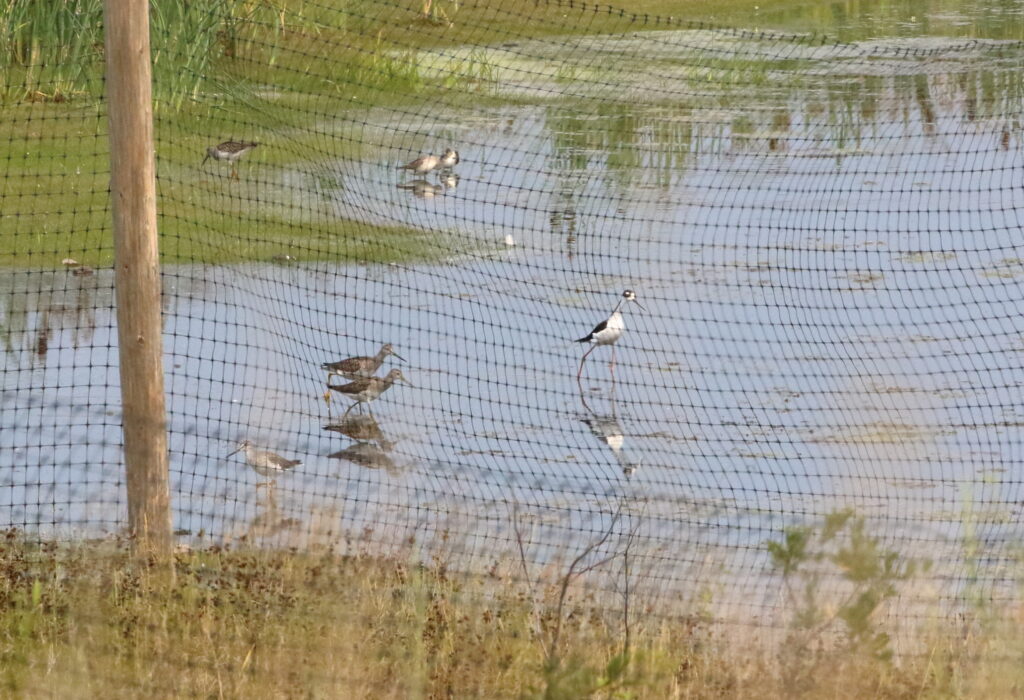
This week, I ran a delivery to the Wenatchee (Washington) fire cache. Having scoured eBird ahead of time for possible quick bird stops, I pulled over at a place called Reardan Ponds north of Spokane. I quickly added Eared Grebes and American Coots to my 100-bird list, but was a bit underwhelmed by other birds. On a whim, I crossed the road to discover a little mudflat—and even better, some kind of shorebird in it! Unfortunately, it quickly scooted into the reeds before I could identify it. Argh!
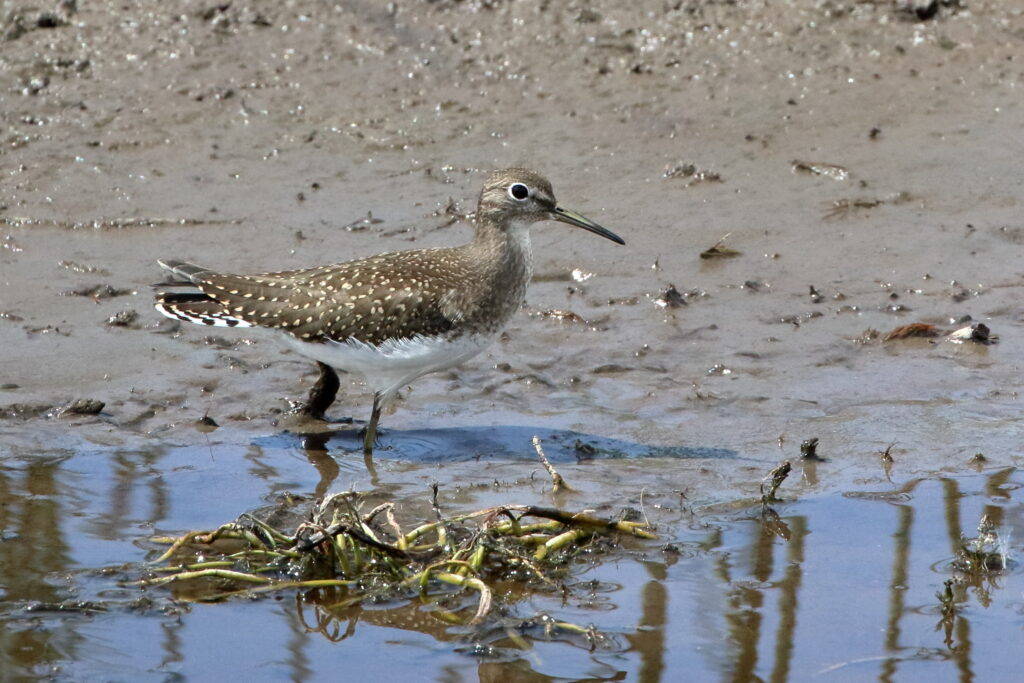
I decided to give it five minutes, and to my delight a Solitary Sandpiper suddenly appeared in front of me—perhaps the best look ever I’ve had of these awesome birds. “But that’s not what I saw earlier, was it?” I asked myself. Then, I spotted not one, but two, small birds in the “peeps” category—small sandpipers of several different varieties. Peeps are very hard to ID, but these two gave me a nice long look, and even more important, some good photos. Later that night, I determined that they were Semipalmated Sandpipers! Not only a GREAT bird for my list, but a Year Bird to boot! However, still not sure of my ID, I posted a photo to the Montana Bird Discussioin Group and talked it over with Braden. Turns out, they weren’t Semis at all, but Least Sandpipers, with mud on their legs covering up their diagnostic yellow colors. I tell you, those peeps are tough, but I was still delighted with the discovery—and learned a lot to boot! UPDATE: So, this still isn’t 100% resolved. Another highly-respected MT birder makes some good points that the birds below are Semis after all! What do YOU think?
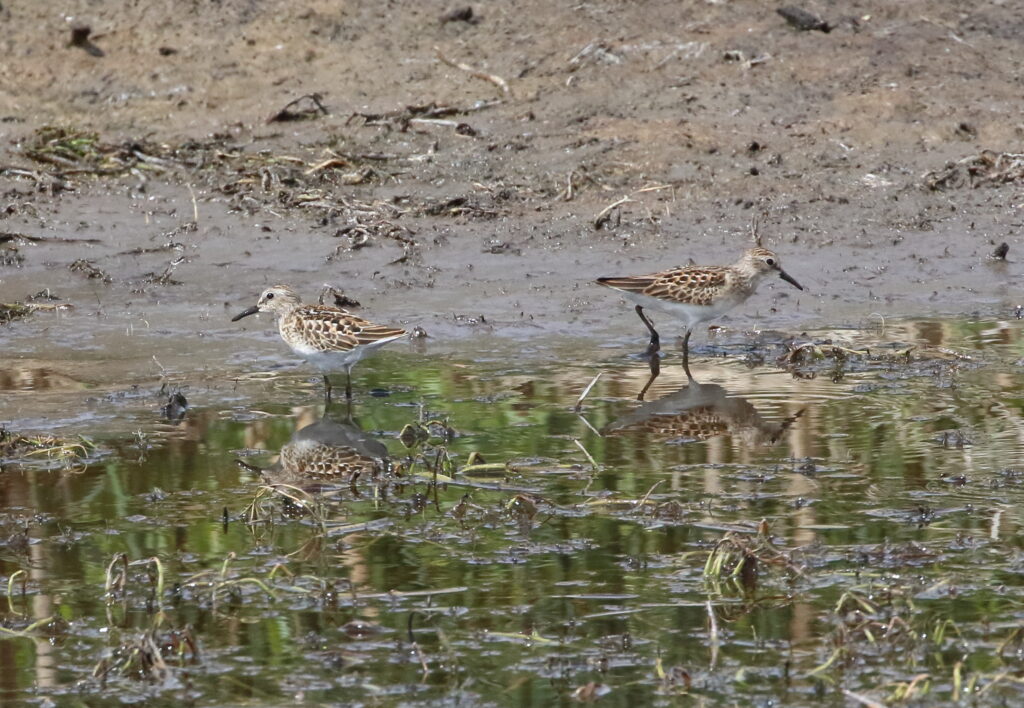
As a bonus, the next day, returning to Missoula, I added several new songbirds—a category I’d about given up on for my goal. At a little park in St. Regis, I not only got Cordilleran Flycatcher, but Red Crossbills, and a Red-eyed Vireo, a bird I hadn’t dared hope for. So where does that leave me? Well, as of today, I have reached exactly 80, count ‘em, EIGHTY species! Will I make it to 100? It’s still going to be tough. Not only am I running out of likely birds, I won’t be able to drive for the next couple of weeks, and the season may be over when I get back. Never fear, though, I will let you, our loyal readers, know of any further success! Keep on birding!
